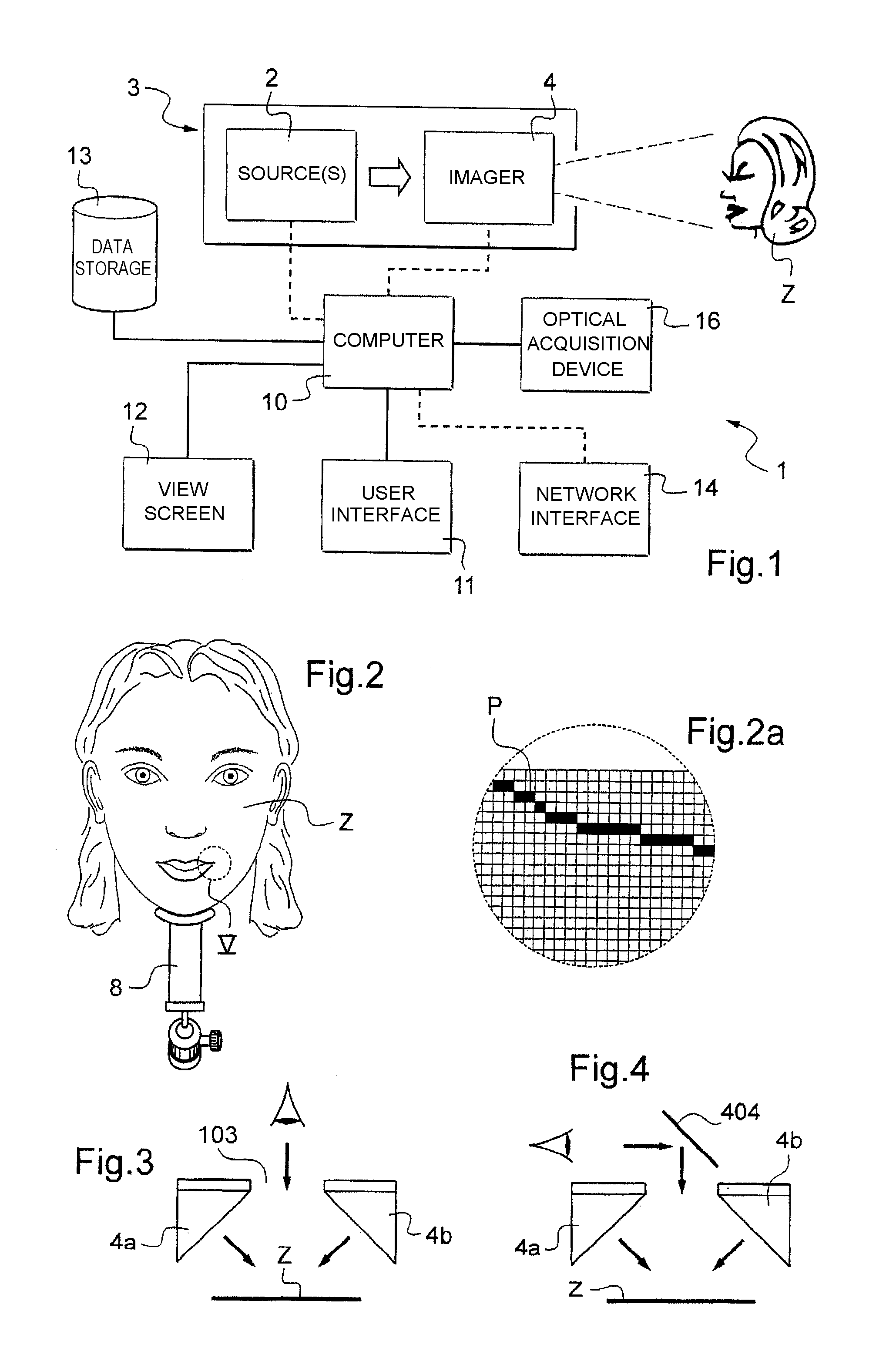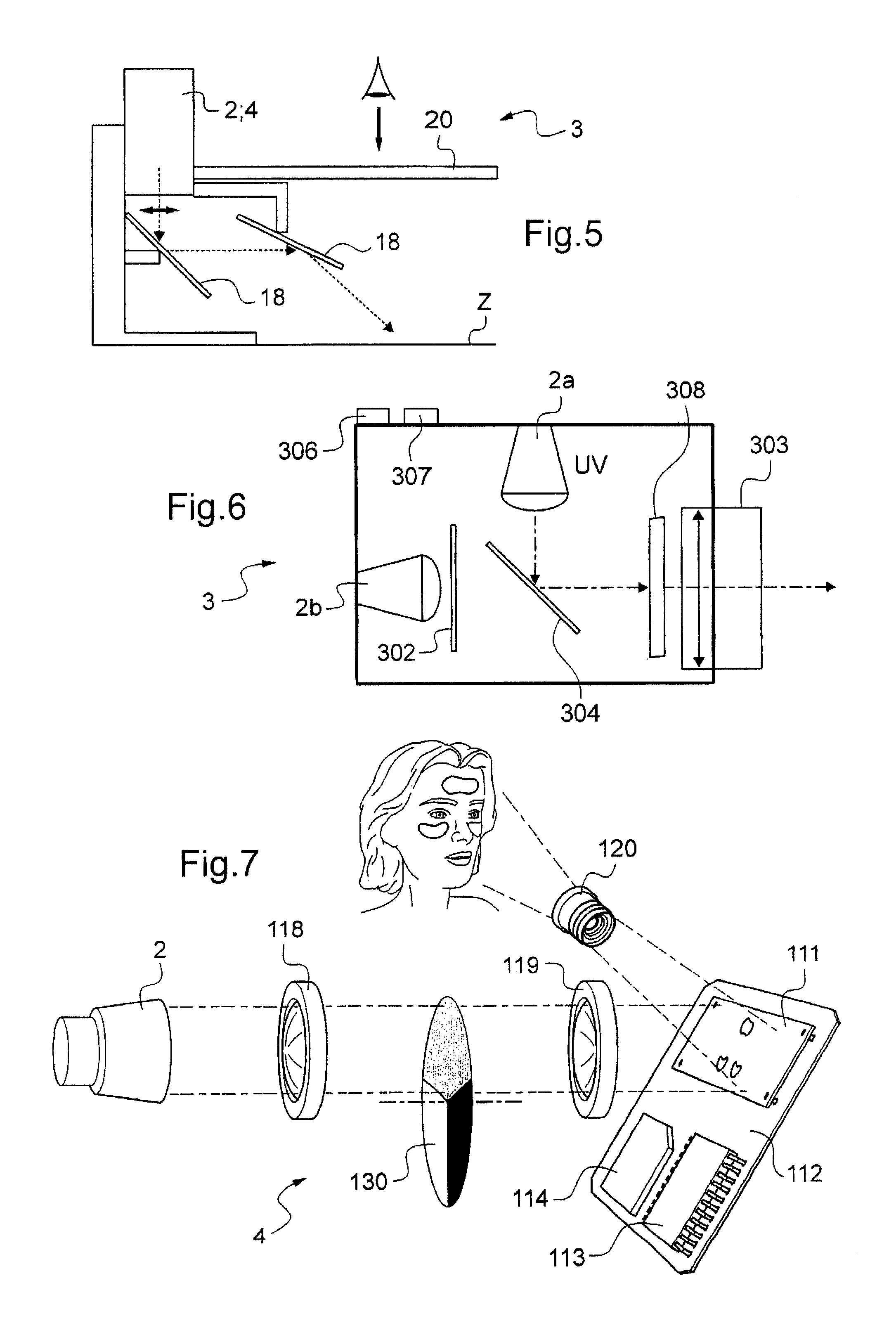Cosmetic treatment method including the projection of an image onto the zone to be treated
- Summary
- Abstract
- Description
- Claims
- Application Information
AI Technical Summary
Benefits of technology
Problems solved by technology
Method used
Image
Examples
example 1
[0687]The photochromic composition was applied on the support, then allowed to dry for 1 minute. Projection took place 20 cm from the support. The first switch was used to activate projection of the simulation in visible light. The imaged projected on the surface was observed. Focus and positioning were adjusted, then the second switch for emitting in UV light was actuated to activate the light-sensitive makeup and form the design of the negative with the photochromic composition.
example 2
[0688]The same irradiator as above was used, except for the negative and the fact that the green filter was removed from the apparatus.
[0689]The negative was formed on a transparent medium by using a filter composition (Parsol 1789) and an image in the form of a stencil representing the lips in negative, the surface of the lips not being covered by the filter.
[0690]Then, four red dots were drawn on the transparent medium with a felt tip pen, representing the two corners of the lips and the top and bottom points of the lips.
[0691]The photochromic composition was applied on a support simulating the lips, then the irradiator was placed 20 cm from the support.
[0692]The first switch was used to activate projection of the simulation. The image projected on the surface comprised four red dots. Focus and positioning were adjusted so that the red dots merged with the shape of the lips. Then, the second switch was actuated to activate the light-sensitive makeup and form a lip design with the ...
example 3
[0693]The same irradiator was used as in example 1.
[0694]The negative was made as follows.
[0695]A photograph was taken of a person having a few red or pink marks on the face, and was printed on paper. A transparent medium was placed on top and the entire surface of the medium was blackened except for the marks.
[0696]In this example, the photochromic composition was a blue diarylethene and a yellow diarylethene such as those indicated above.
[0697]The photochromic composition was applied on the surface where the marks were situated, then the irradiator was placed 20 cm from the surface.
[0698]The first switch was used to activate projection of the simulation. The image projected on the surface was formed by bright dots. Focus and positioning were adjusted so that the bright dots merged with the real marks. Then, the second switch was actuated to activate the light-sensitive makeup.
[0699]A green color was developed exactly on the marks, thereby limiting their visibility.
PUM
| Property | Measurement | Unit |
|---|---|---|
| Fraction | aaaaa | aaaaa |
| Fraction | aaaaa | aaaaa |
| Fraction | aaaaa | aaaaa |
Abstract
Description
Claims
Application Information
 Login to View More
Login to View More - R&D
- Intellectual Property
- Life Sciences
- Materials
- Tech Scout
- Unparalleled Data Quality
- Higher Quality Content
- 60% Fewer Hallucinations
Browse by: Latest US Patents, China's latest patents, Technical Efficacy Thesaurus, Application Domain, Technology Topic, Popular Technical Reports.
© 2025 PatSnap. All rights reserved.Legal|Privacy policy|Modern Slavery Act Transparency Statement|Sitemap|About US| Contact US: help@patsnap.com



